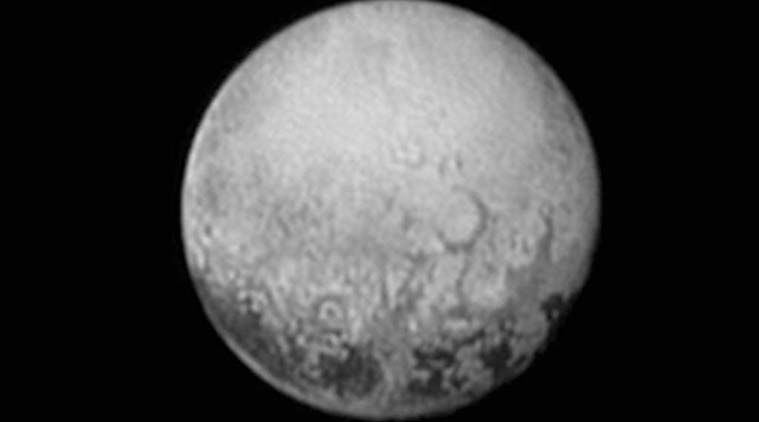Opinion Hello Pluto
‘New Horizons’ reveals the-planet-that-wasn’t is bigger than we thought. What other mysteries are in store?

 This July 11, 2015, image provided by NASA shows Pluto from the New Horizons spacecraft. (Source: AP)
This July 11, 2015, image provided by NASA shows Pluto from the New Horizons spacecraft. (Source: AP)
Contrary to sci-fi fantasies, space travel takes time. To make its rendezvous with Pluto, the not-planet, Nasa’s New Horizons spacecraft left Earth more than nine years ago. It has been careening through the 2.97 billion miles that separate us from Pluto — about 32 times the distance between the Earth and the sun — at 31,000 miles per hour. If all goes according to plan, New Horizons would have whizzed 7,750 miles (a smidge less than Earth’s diameter) past one face of the dwarf planet, the closest it will ever get to it. In the meantime, the probe has been sending spectacular images of Pluto, illuminating its entirely unexpected features — the icy polar cap; a mysterious, white heart-shaped region; a possible subsurface ocean; and, most significantly, its size.
So many people grew up learning about Pluto as the final outpost of our solar system that its unceremonious demotion, in 2006, to a dwarf planet caused no little consternation. It features heavily in sci-fi lore, including H.P. Lovecraft’s Cthulhu stories. It always seemed like a scientific curiosity: other planets are either gas giants or rocky and modestly sized, so this lonely little ice ball at the edge of the system appeared especially strange. And sort of cool, and rather enigmatic. That’s why New Horizons’s discovery that Pluto isn’t as small as scientists thought, reigniting the debate on whether it should be upgraded to planet status, offers much succour to Pluto’s many supporters.
While the aptly named New Horizons maps all sorts of interesting geological details — particularly valuable because Pluto and its major moon, Charon, thought to have formed the same way as Earth and our Moon, are the only other planetoids in striking distance, so to speak — it will also give us those too-rare moments of wonder, showing us something we truly have not seen before.





